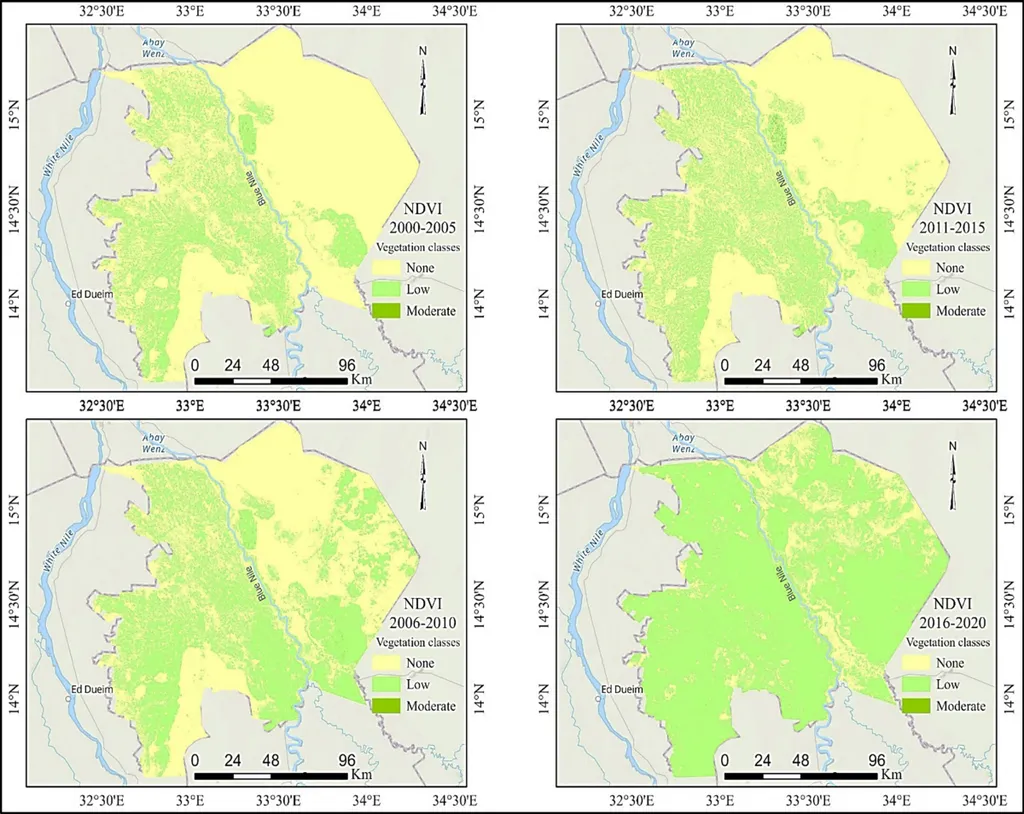In the heart of Sudan’s Al-Gezira state, a groundbreaking study is reshaping how we understand and predict the green water footprint (GWFP) of cotton, a crop vital to the region’s economy. Published in *Applied Water Science*, the research led by Rogaia H. Al-Taher from the Department of Agricultural Engineering at Cairo University, employs machine learning models to optimize GWFP predictions, offering a beacon of hope for sustainable agriculture in the face of climate change.
Water scarcity and climate change are pushing Sudan to its limits, driving significant migration and threatening the livelihoods of millions. With 1 million hectares of arable land under irrigation and 9 million relying solely on conventional rainfed techniques, the stakes are high. The green water footprint, which accounts for precipitation stored in the soil and consumed in biomass production, is a critical metric for developing sustainable agricultural practices and managing water resources effectively.
Al-Taher’s research delves into the intricate dance of climatic conditions, agricultural data, and remote sensing indices to predict the GWFP of cotton from 2001 to 2020. The study implements seven models, including random forest (RF), Extreme Gradient Boosting (XGBoost), and support vector regressor (SVR), along with hybrid combinations like RF-XGB, RF-SVR, XGB-SVR, and RF-XGB-SVR. These models were tested across five scenarios, each incorporating diverse variable combinations.
The results are striking. The hybrid models, particularly the RF-XGB-SVR combination, outperformed single models, achieving remarkable accuracy. “The highest R² values reached 1.0 or 0.99, indicating an almost perfect fit,” Al-Taher explains. “This level of precision is crucial for economic planning and fostering virtual green water trade, ultimately improving human well-being.”
The commercial implications for the agriculture sector are profound. Accurate GWFP predictions enable farmers and policymakers to make informed decisions, optimizing water use and enhancing crop yields. “By reducing the error term in predictions, hybrid models can significantly improve the efficiency of water resource management,” Al-Taher notes. This is particularly important in regions like Al-Gezira, where water scarcity is a pressing issue.
The study also highlights the negligible impact of remote sensing indices on GWFP prediction, suggesting that future research should focus on other variables. “While remote sensing indices showed minimal positive impact, the hybrid models demonstrated their superiority in forecasting cotton GWFP,” Al-Taher concludes.
As the agriculture sector grapples with the challenges posed by climate change, this research offers a promising path forward. By leveraging advanced machine learning techniques, farmers and policymakers can better manage water resources, ensuring sustainable agricultural practices and economic stability. The study’s findings, published in *Applied Water Science* and led by Rogaia H. Al-Taher from Cairo University, mark a significant step towards a more resilient and water-efficient future for cotton cultivation in Sudan and beyond.

